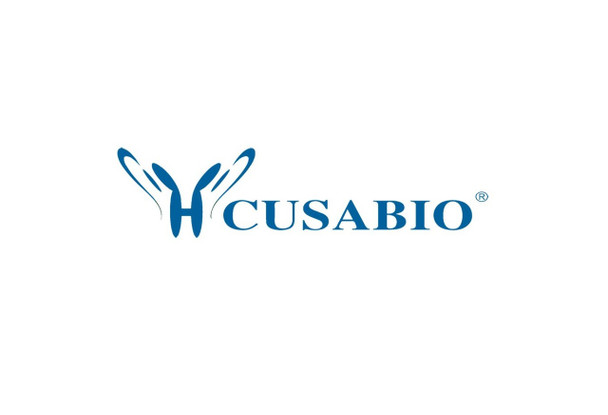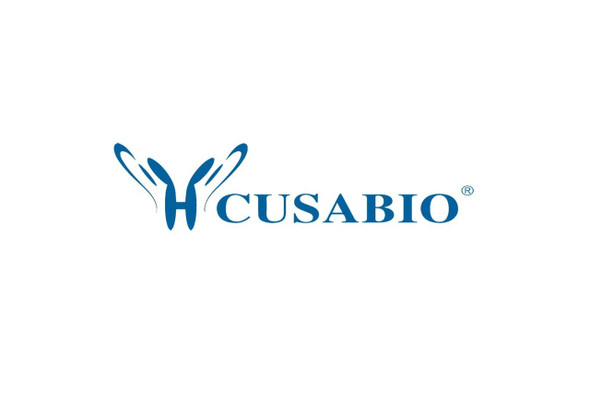Cusabio Human Recombinants
Recombinant Human variant SIRP alpha (SIRPA) | CSB-EP3582HU
- SKU:
- CSB-EP3582HU
- Availability:
- 3 - 7 Working Days
Description
Recombinant Human variant SIRP alpha (SIRPA) | CSB-EP3582HU | Cusabio
Alternative Name(s): Brain Ig-like molecule with tyrosine-based activation motifs ;BitCD172 antigen-like family member AInhibitory receptor SHPS-1Macrophage fusion receptorMyD-1 antigen;Signal-regulatory protein alpha-1 ;Sirp-alpha-1Signal-regulatory protein alpha-2 ;Sirp-alpha-2Signal-regulatory protein alpha-3 ;Sirp-alpha-3p84; CD172a
Gene Names: SIRPA
Research Areas: Cardiovascular
Organism: Homo sapiens (Human)
AA Sequence: MEEELQIIQPDKSVLVAAGETATLRCTITSLFPVGPIQWFRGAGPGRVLIYNQRQGPFPRVTTVSDTTKRNNMDFSIRIGNITPADAGTYYCIKFRKGSPDDVEFKSGAGTELSVRAKPVDGGFLGGGGCG
Source: E.coli
Tag Info: N-terminal 10xHis-tagged and C-terminal Myc-tagged
Expression Region: 1-131aa
Sequence Info: Full Length
MW: 21.5 kDa
Purity: Greater than 85% as determined by SDS-PAGE.
Relevance: Immunoglobulin-like cell surface receptor for CD47. Acts as docking protein and induces translocation of PTPN6, PTPN11 and other binding partners from the cytosol to the plasma membrane. Supports adhesion of cerebellar neurons, neurite outgrowth and glial cell attachment. May play a key role in intracellular signaling during synaptogenesis and in synaptic function . Involved in the negative regulation of receptor tyrosine kinase-coupled cellular responses induced by cell adhesion, growth factors or insulin. Mediates negative regulation of phagocytosis, mast cell activation and dendritic cell activation. CD47 binding prevents maturation of immature dendritic cells and inhibits cytokine production by mature dendritic cells.
Reference: "Mouse and human SHPS-1: molecular cloning of cDNAs and chromosomal localization of genes." Yamao T., Matozaki T., Amano K., Matsuda Y., Takahashi N., Ochi F., Fujioka Y., Kasuga M. Biochem. Biophys. Res. Commun. 231:61-67(1997)
Storage: The shelf life is related to many factors, storage state, buffer ingredients, storage temperature and the stability of the protein itself. Generally, the shelf life of liquid form is 6 months at -20?/-80?. The shelf life of lyophilized form is 12 months at -20?/-80?.
Notes: Repeated freezing and thawing is not recommended. Store working aliquots at 4? for up to one week.
Function:
Involvement in disease:
Subcellular Location:
Protein Families:
Tissue Specificity:
Paythway:
Form: Liquid or Lyophilized powder
Buffer: If the delivery form is liquid, the default storage buffer is Tris/PBS-based buffer, 5%-50% glycerol. If the delivery form is lyophilized powder, the buffer before lyophilization is Tris/PBS-based buffer, 6% Trehalose, pH 8.0.
Reconstitution: We recommend that this vial be briefly centrifuged prior to opening to bring the contents to the bottom. Please reconstitute protein in deionized sterile water to a concentration of 0.1-1.0 mg/mL.We recommend to add 5-50% of glycerol (final concentration) and aliquot for long-term storage at -20?/-80?. Our default final concentration of glycerol is 50%. Customers could use it as reference.
Uniprot ID: P78324
HGNC Database Link: N/A
UniGene Database Link: N/A
KEGG Database Link: N/A
STRING Database Link: N/A
OMIM Database Link: N/A









